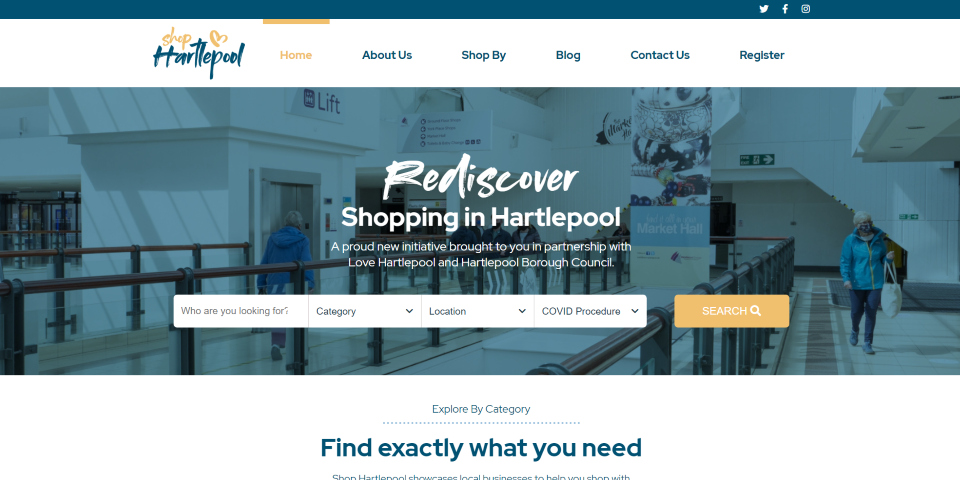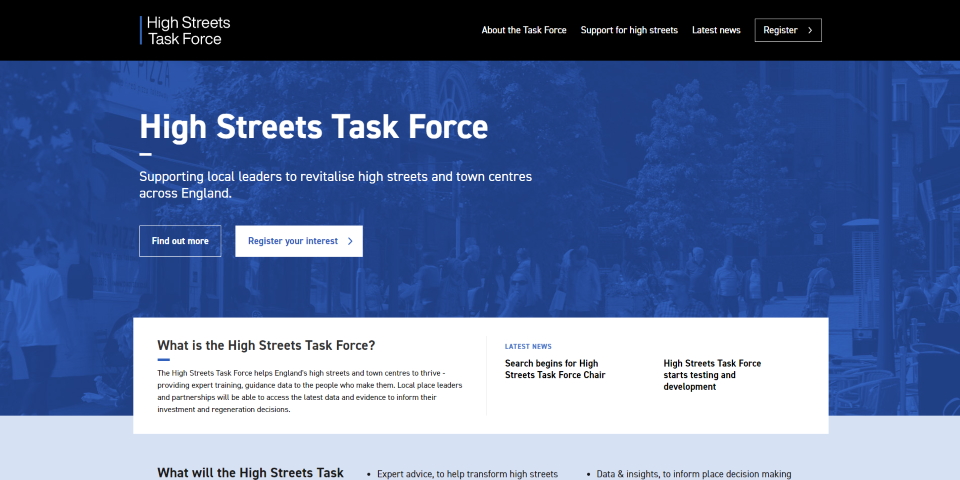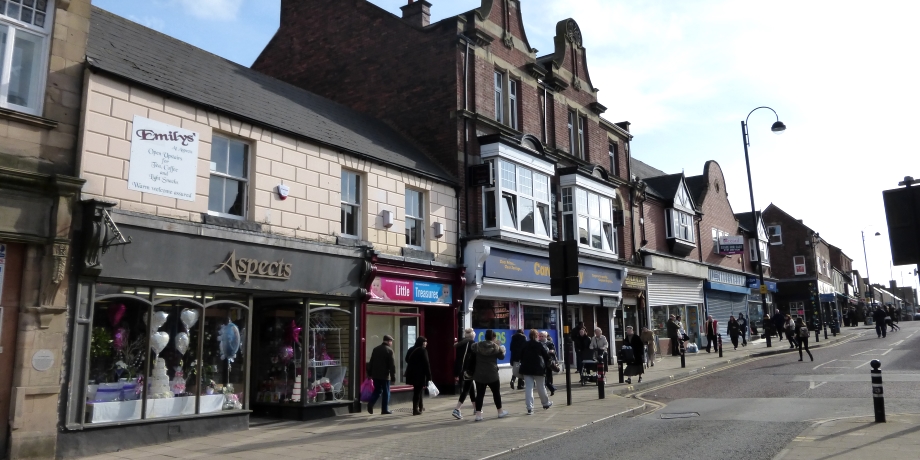It goes without saying that Covid has been an immense challenge for pretty much everyone – whether because of the disruption to businesses, or on a personal and human level.
It can be hard to draw positives out of such a difficult time, but one side-effect of the pandemic, as I’ve noted before, has been a renewed emphasis on, and appetite for, shopping independent and local.
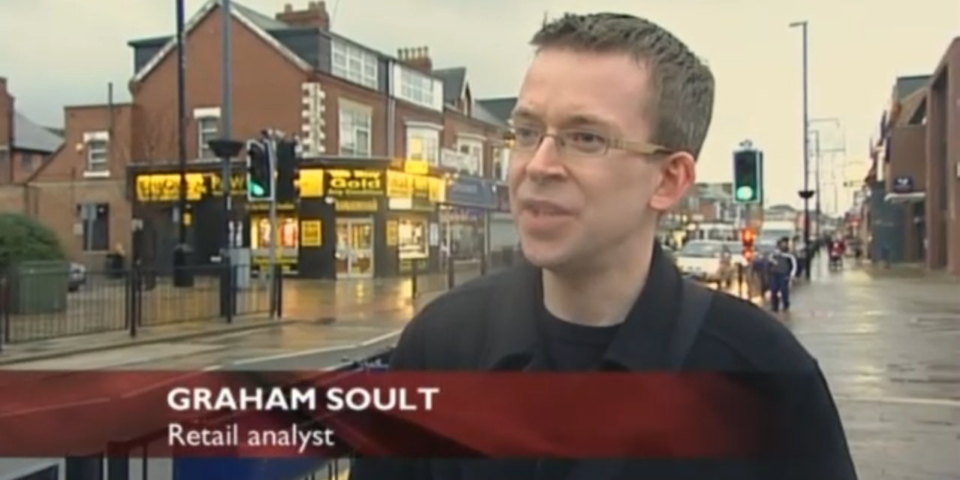
Hartlepool – a town I’ve had connections to for over a decade, having filmed there with BBC’s Inside Out in 2010 – is one such place where this has occurred, with new businesses sprouting up even throughout the pandemic.
This is a phenomenon taking place across the North East, with Durham, for example, seeing over 30 new city centre businesses – the majority independent – open their doors during Covid.
Before we take a closer look here at Hartlepool – and, particularly, it’s successful Shop Hartlepool campaign – it’s worth reminding ourselves of some of the context around how exactly local businesses have been navigating and evolving during Covid.
I’ll also recap the support that has been made available to towns and cities across England, helping to provide a backdrop against which businesses and places can hopefully thrive.
Rediscovering local high streets
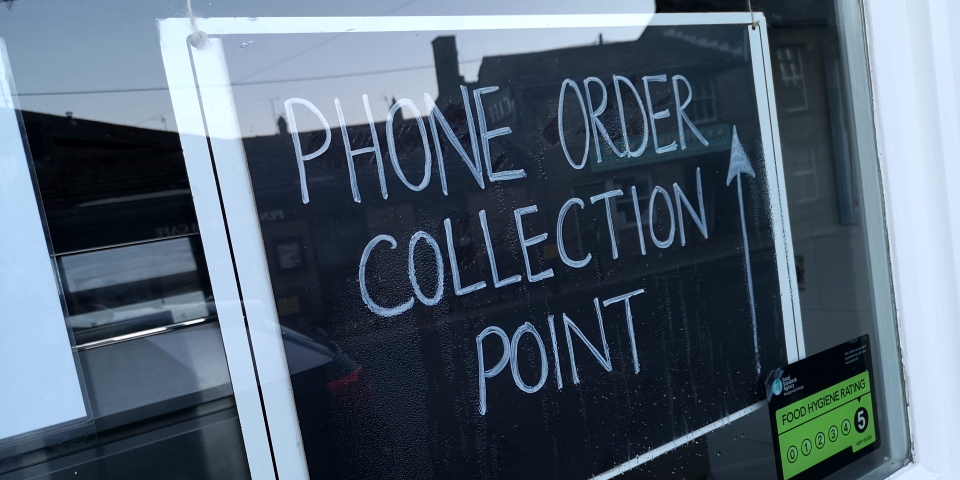
To a certain extent, the embrace of the “shop local” narrative has been an enforced one. Instructed to work at home, some people have had an opportunity to discover or rediscover the local high streets close to where they live.
Alongside, those working in the high-street space – like my colleague Andrew Bartlett, and his Roam Local app – have been pushing positive messages that celebrate and encourage exploring and shopping locally.
At the same time, we absolutely saw all the best features of independent retail spirit during the lockdowns, as businesses that weren’t allowed to open their doors swiftly pivoted to new and convenient ways of serving customers
Businesses I’ve been working with lately, from Durham to Somerset, have continually demonstrated creativity and initiative throughout the pandemic – whether that’s by launching online stores in record time, embracing local delivery or click and collect, or simply making better use of social channels to grow and strengthen their loyal following.
As I’ve argued before, businesses that kept up the conversation and stayed top of mind during periods of closure – rather than disappearing off the radar – have been best placed to bounce back once they were able to reopen.
Government funding for high streets
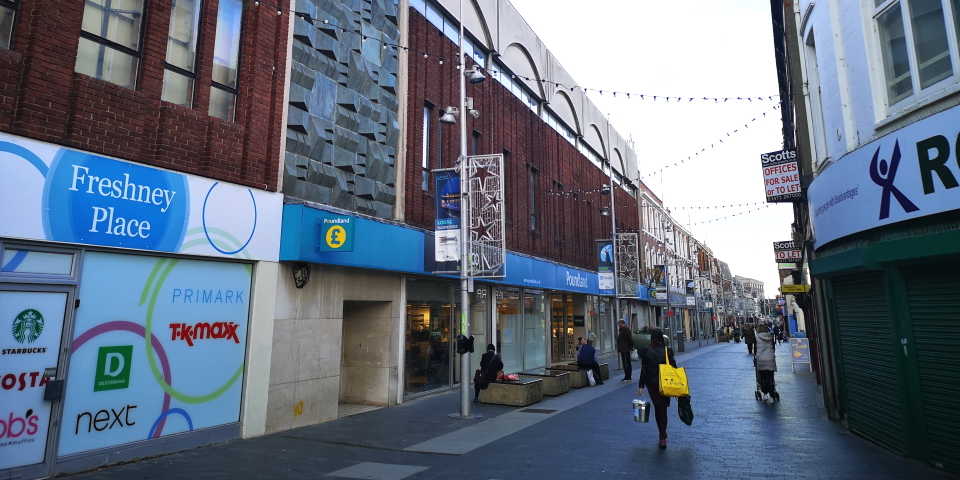
It’s fair to say as well that many places in England have benefited in the last couple of years from government funding to promote and support their high streets – helping to generate a much-needed debate, in those places and in the media, about what the future of our town and city centres will and should look like.
The town centre funding landscape for England is extraordinarily complex – and has got even more so since I attempted to write an explainer about it all in January 2020.
For example, capital funding for high-street regeneration projects has come from the Future High Streets Fund – which awarded £830m to 72 places in 2020 and 2021 – and from a network of 69 High Street Heritage Action Zones (HSHAZs – pronounced “huzazzes”!), where £95m is being spent on transforming disused or underused historic buildings in key high-street conservation areas around England.
Many of the HSHAZs are also working to create new local partnerships or help businesses upskill, such as via the retail and marketing workshops that I’m delivering for Reading HSHAZ.
⚠️ Calling local businesses⚠️
Retail consultants @CannyInsights @soult will be offering you a series of FREE webinars focusing on how you can maximize your footfall!
Fill in the online form by the end of the week to help us tailor them to YOU:https://t.co/xKIanvpms4 pic.twitter.com/5hXOOIZhxO
— Reading's High Street Heritage Action Zone (@hshaz_reading) July 20, 2021
Separately, the £3.6 billion Towns Fund – which the Future High Streets Fund is sometimes framed as being part of – has agreed 101 “Town Deals” of up to £25m each. These aim to “foster economic regeneration, stimulate investment and deliver vital infrastructure”, sometimes – but not necessarily – in relation to town centres. Hartlepool’s successful proposal addresses local skills gaps and town centre connectivity, but also the “reimagining” of the busy but inward-facing Middleton Grange shopping centre.
High Streets Task Force
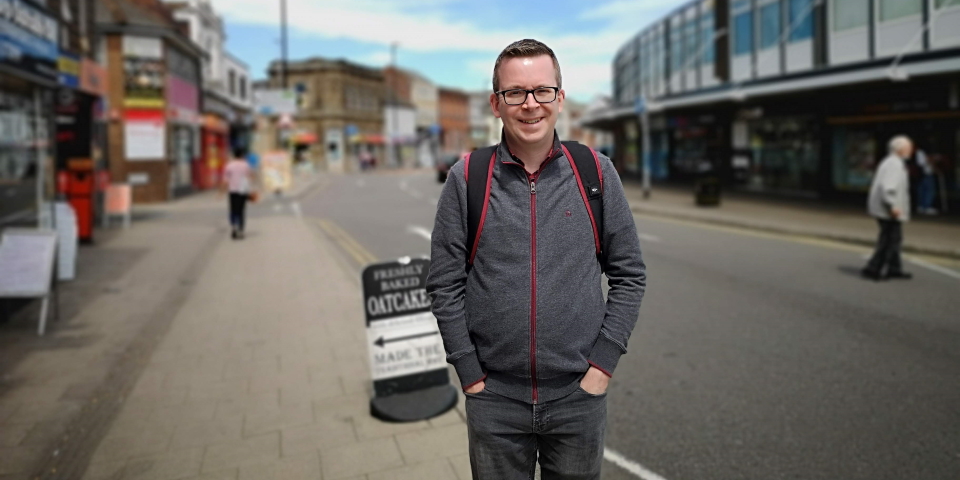
There is also the government-initiated High Streets Task Force, of course, led by the Institute of Place Management (IPM), and whose work I’m helping to deliver as one of its appointed Experts.
Where the funding initiatives described in the previous section are based on capital investment and physical regeneration, the Task Force focuses on delivering support to local leaders in town centres and high streets – in short, by providing information, advice, training, knowledge and data, in order to strengthen local leadership and help people make a positive difference to their local communities.
So far, my work as a High Streets Task Force Expert has taken me all over England, to places such as Longton in Stoke-on-Trent, Plymouth, Grimsby, Hull, Sheffield and, indeed, Hartlepool.
Hartlepool and the Task Force
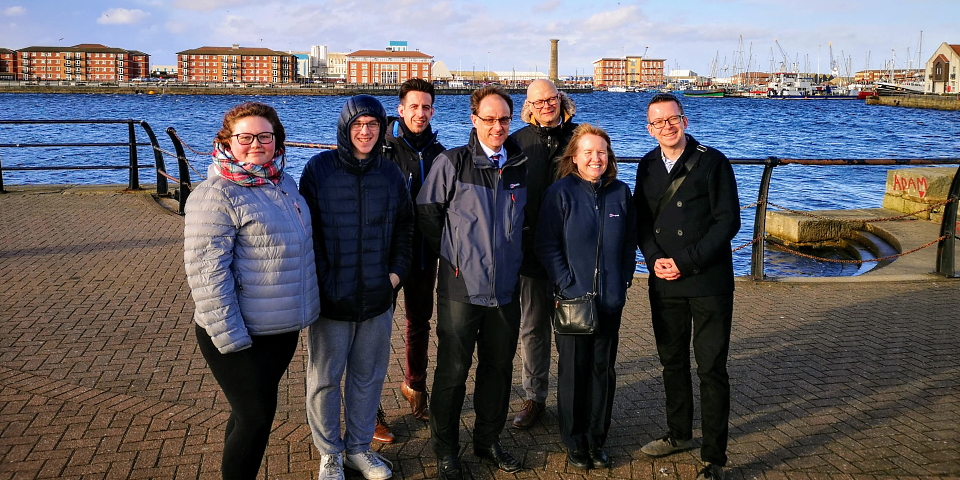
It’s worth reminding ourselves of the backstory to Hartlepool’s participation in the High Streets Task Force. Basically, in December 2019, Hartlepool borough was announced as one of 14 local authorities – and the only one in the North East at that time – that would pilot the products and services of the Task Force, with a focus on Hartlepool town centre.
As one of the 150 local authorities that submitted a Future High Streets Fund bid but was not shortlisted for funding, Hartlepool received an independent “Transforming Your High Street” report from the High Streets Task Force, designed to help local authorities identify their challenges, create a better vision, build more capacity for collaborative working, and show how the training, data and other support available through the High Streets Task Force would help to achieve this.
In March 2020 – just days before the first Covid restrictions – Hartlepool received its in-person “Unlocking Your Place Potential” (UYPP) visit from the High Streets Task Force, led by me and fellow High Streets Task Force Expert Sonia Cubrilo.
The purpose of the visit was to diagnose the main barrier to Hartlepool’s transformation – in other words, what problem, if not resolved now, would make it difficult for the town to change.
To do this, the Experts sought to understand more about the challenges facing the town and Hartlepool’s plans for transformation, alongside meeting key stakeholders, asking questions, and touring the town centre.
Following the UYPP visit, and additional discussions with the local authority representatives, the High Streets Task Force agreed that the further two days of Expert support that are available should take the form of helping the town to activate its new Shop Hartlepool campaign.
In most cases, the High Streets Task Force Expert delivering the follow-up Expert support is different to the one who undertakes the UYPP visit – this allows the Task Force to find and assign the most suitable Expert from across its partner organisations (including professional bodies like the Royal Town Planning Institute (RTPI) and Landscape Institute, as well as IPM), and gives the place another potentially useful pair of eyes.
However, because of my strong North East networks, existing Hartlepool connections, and relevant experience from working with local authorities and independent retailers on campaigns in places such as Chester-le-Street and Durham, I was happy to agree to continue working with the town.
I’m particularly looking forward to paying a return visit, and meeting up again with local place leaders and businesses, in the next few weeks – but more about that later.
The Shop Hartlepool campaign
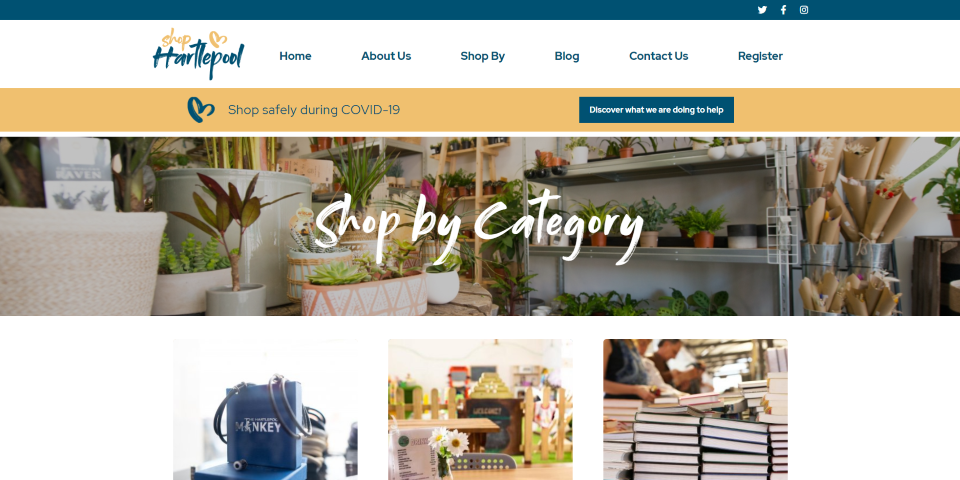
So, what is Shop Hartlepool? In short, it is a campaign and free-to-use online platform that “showcases local businesses to help you shop with confidence and find exactly what you want”.
Hartlepool Borough Council is involved, with the driving force being the community-driven Love Hartlepool group – a longstanding initiative that “brings together leaders, volunteers and businesses working together to improve our town”, and has done sterling work over the years in changing perceptions of Hartlepool for the better.
Many of Shop Hartlepool’s featured businesses – of which more than 200 have so far signed up for their free listings – are bricks-and-mortar traders in Hartlepool town centre, but the campaign also covers the wider borough, and includes local businesses that operate only online.
Like a lot of similar recent initiatives to promote England’s high streets, the campaign has benefited from funding from the government’s Reopening High Streets Safely Fund (RHSSF) – where all councils received a share of £50m in 2020 – and its 2021 successor, the £56m Welcome Back Fund. Funding for both schemes has been provided by the European Regional Development Fund (ERDF).
Different local authorities have employed their Welcome Back Fund monies in different ways, but all with a focus on encouraging people back to their local town centres after lockdown.
Many councils, for example, have spent money on streetscape improvements, such as seating, parklets, and positive Covid-safe messaging. Others have chosen to fund free business support for local retailers, such as the Welcome Back North Somerset project that I have been part of the delivery team for.
And many, like Hartlepool, have used funding to kickstart marketing campaigns that showcase the quality and appeal of the local offer, and encourage residents and visitors to visit and enjoy the place.
Why townwide campaigns like Shop Hartlepool are important and effective
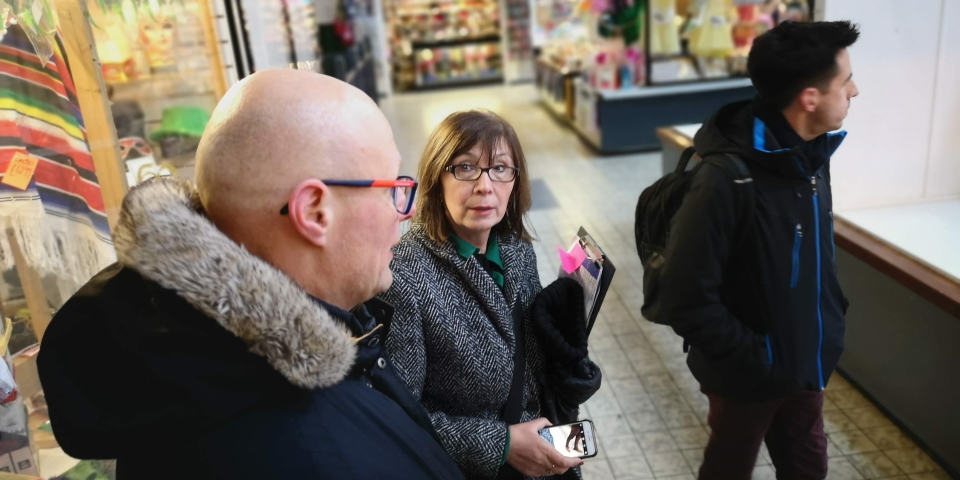
Pretty much anything that showcases local businesses positively, and encourages more people to support them, is inherently going to be welcome.
However, from my own work with many different businesses in various locations, I’ve learnt that packaging up a town’s offer as part of a local marketing campaign – like I do with “Indie Durham City” and “Shop Chester-le-Street” – can be a really effective way of spreading a clear and attractive message, building positive perceptions, and driving footfall and sales.
That’s why I’m really pleased, wearing my hat as a High Streets Task Force Expert, to be able to help Shop Hartlepool celebrate its success so far, demonstrate to other places the benefits of such a campaign, and hopefully encourage even more local businesses and shoppers to get involved.
As ever in place promotion, there are many more things to do and opportunities to seize, but here are just five key reasons why Shop Hartlepool – and campaigns like it – are good for places, businesses and shoppers.
1. Tell people you exist
From talking to bricks-and-mortar retailers all the time, they’re always telling me how often they get new customers walking through the door asking “Have you just opened?”, to which the response is typically “No, we’ve been open here for two/five/ten years” (or sometimes even longer).
In short, some people can walk past a shop for years and years without even noticing it, even when a business is doing all it can to make an impact with its kerb appeal.
So, using online channels to grab eyeballs and generate interest – whether that’s through a shop’s own website or social media, or a platform like Shop Hartlepool – is really valuable. More importantly, from the number of times retailers tell me “Someone came in today who said they had seen the shop online”, we know it works in generating actual visits, and not just positive sentiment online.
2. Portray the breadth of a place’s offer
As a retailer, it’s easy to focus the bulk of your attention on promoting your own business – but it’s important to take a step back, and put yourself in the mind of the shopper or visitor. This way of looking at how places meet the needs of their communities links nicely to the 25 ‘Vital and Viable’ priorities that the High Streets Task Force regularly talks about.
There are undoubtedly some businesses in a town like Hartlepool that are specialist or enticing enough to draw people in to make a special visit. In many cases, though, people planning a trip want to combine a range of experiences – perhaps browsing some independent boutiques, enjoying lunch in a restaurant, grabbing some beauty time at the nail salon, and then rounding off the afternoon with a coffee – and to do so in a way that is convenient and hassle-free.
That’s another reason why a campaign like Shop Hartlepool can be so useful – the “Shop by Category” section brings together different types of businesses in one place, giving visitors a chance to discover shops and eateries they might not previously have known about, and to start seeing Hartlepool as somewhere that can easily occupy and entertain them for longer than they might have realised.
3. …and that includes online
Speaking as a high-street champion, you might think it counter-intuitive that I’m in favour of promoting businesses that trade online. But there’s a big difference between corporate giants like Amazon and the many, many small retailers – sometimes starting off at the kitchen table – that are trading online via their own e-commerce sites or on platforms like eBay and Etsy.
From working with retailers like Discovering Durham, or The Crafty Gift Shop in Chester-le-Street – both of which showcase local producers and crafters – I’ve seen how businesses that have traded only online, or at fairs, are often keen to gain a toehold on the high street. In some cases, this taste for bricks-and-mortar retail can lead to even bigger things down the line.
The High Streets Task Force talks about how “we have a vision for town centres and high streets as the heart of their communities, with a unique sense of place and a strong identity”.
So, it’s absolutely right and positive that the Shop Hartlepool campaign is shining a light on the borough’s creative and interesting online traders. Some of these might yet be the dynamic, distinctive local businesses that bring something new to the high street in years to come.
4. Create an attractive and Googleable place brand
One of the things that the High Streets Task Force does in its pre-visit desk research is take a look at how the town centre in question is being promoted and marketed online. For example, is there a dedicated website – or even a page on the local authority site – that showcases the offer and encourages visits? If a place is invisible on the web, the chances of people discovering and visiting it are bound to be reduced.
Indeed, the lack of a digital footprint for the town was one of the motivations behind the Shop Chester-le-Street campaign that I manage. Searching for something like “Chester-le-Street shopping” used to bring up few useful results; now, the @ShopChesterleSt social channels appear prominently, giving potential visitors a place where they can find out more about the richness and diversity of what the town offers.
Love Hartlepool has long been a masterclass in place marketing – especially because the messaging has been authentic, and driven by people working together on the ground – and now Shop Hartlepool is applying a similar approach to the town’s increasingly interesting retail offer.
5. Bring businesses and other stakeholders together
A campaign like Shop Hartlepool isn’t just about reaching out to shoppers and visitors – it’s a great foundation for cementing a sense of community and shared vision among local businesses too.
As I’ve learnt from my work in Durham and Chester-le-Street, local businesses are able to use the new marketing channels to discover, and make connections with, each other.
Often, in a place, it’s surprising the number of business people who haven’t met one another before, so anything that facilitates new relationships – and the opportunities that can emerge from local businesses and other place leaders chatting and potentially working together – is invaluable. In Hartlepool, because the Shop Hartlepool campaign is grassroots driven, all those qualities are amplified even more.
Certainly, one of the big themes that regularly emerges from our High Streets Task Force work is the importance of coordination and partnerships. In short, almost all the places that are doing well are those where stakeholders are on the same page and working together in a solution-focused way – channelling their energy into making positive change happen, rather than complaining from the sidelines about change not happening.
Indeed, those principles underpin two of the Task Force’s “four Rs” of regeneration that provide a strategic approach to high-street renewal: “Rebranding”, which includes a focus on better stakeholder communications; and “Restructuring”, which encompasses the structures and partnerships for managing a place.
It’s great to see how Shop Hartlepool is addressing both: helping to transform the way that people communicate and hear about the town, at the same time as building town-wide networks that give Hartlepool the best chance of thriving into the future.
Conclusion
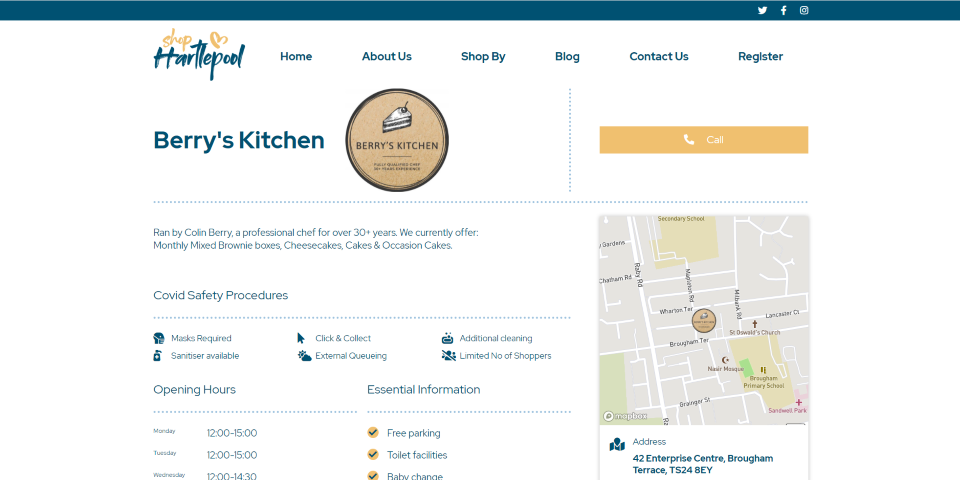
Over the last year or so, it’s been fantastic to see the positive work of Shop Hartlepool in celebrating local shops, cafes and other businesses, and giving them a practical platform that they can use to showcase what they offer, provide key information in one place, and, ultimately, generate more visits and sales.
Better still, the campaign is really well executed – the Shop Hartlepool name and logo cleverly tap into the brand familiarity of the broader Love Hartlepool initiative, and the website itself is clean, appealing and easy to use, and (crucially) looks great on both desktop and mobile devices.
The traction the campaign has gained so far is really impressive too. Even when something is being offered for free, it can be a challenge to get busy – and sometimes tech-challenged – businesses on board, and there’s no doubt that the Shop Hartlepool team’s on-the-ground networks and infectious enthusiasm have played a big part in securing the 200 sign-ups so far.
So, nearly two years after last visiting Hartlepool, I can’t wait to return: catching up with the Shop Hartlepool team face to face; meeting some of the businesses that have opened or grown since I was previously there; doing my bit to raise the profile of the campaign even further; and, hopefully, coming up with some positive and practical pointers that we can share with other place leaders via the High Streets Task Force Resource Library.

